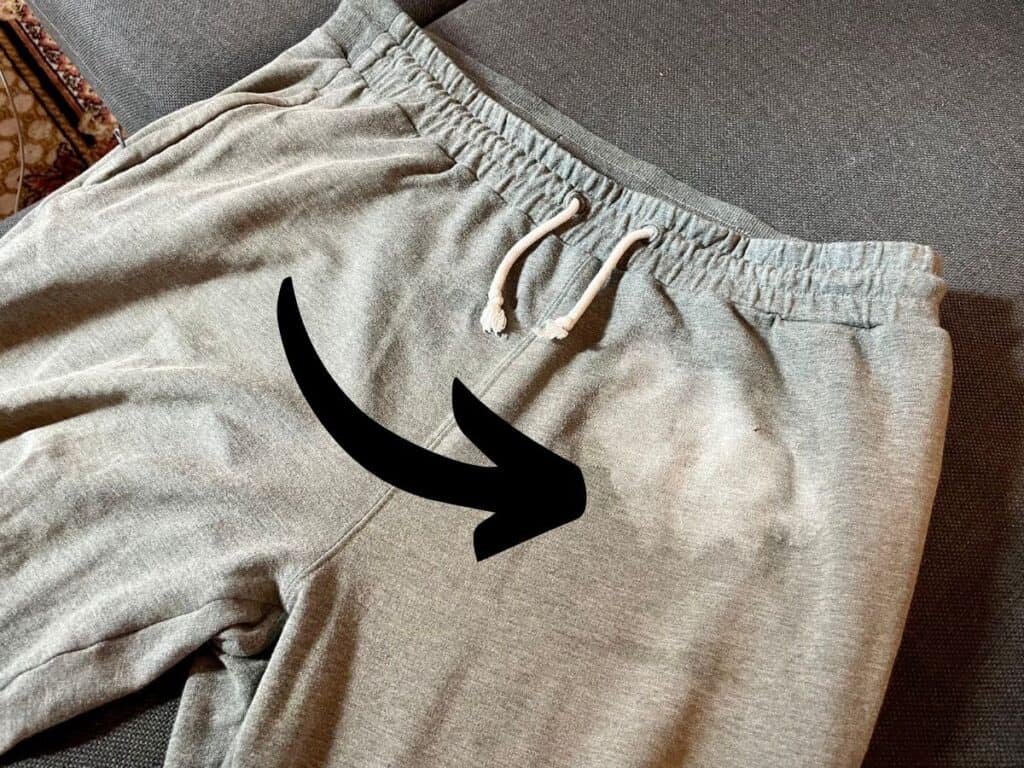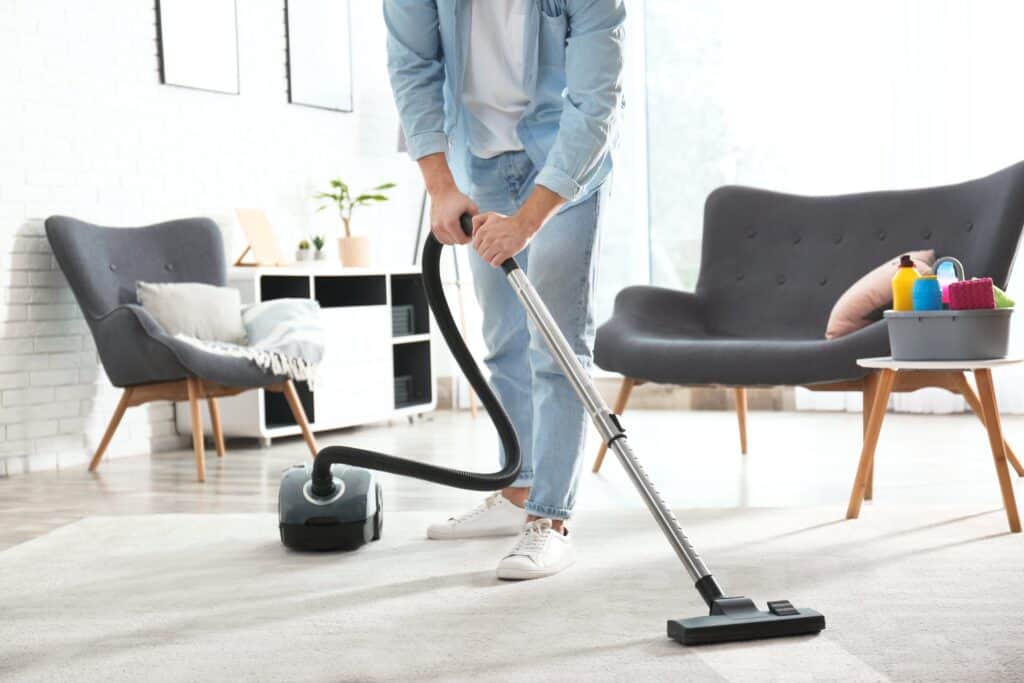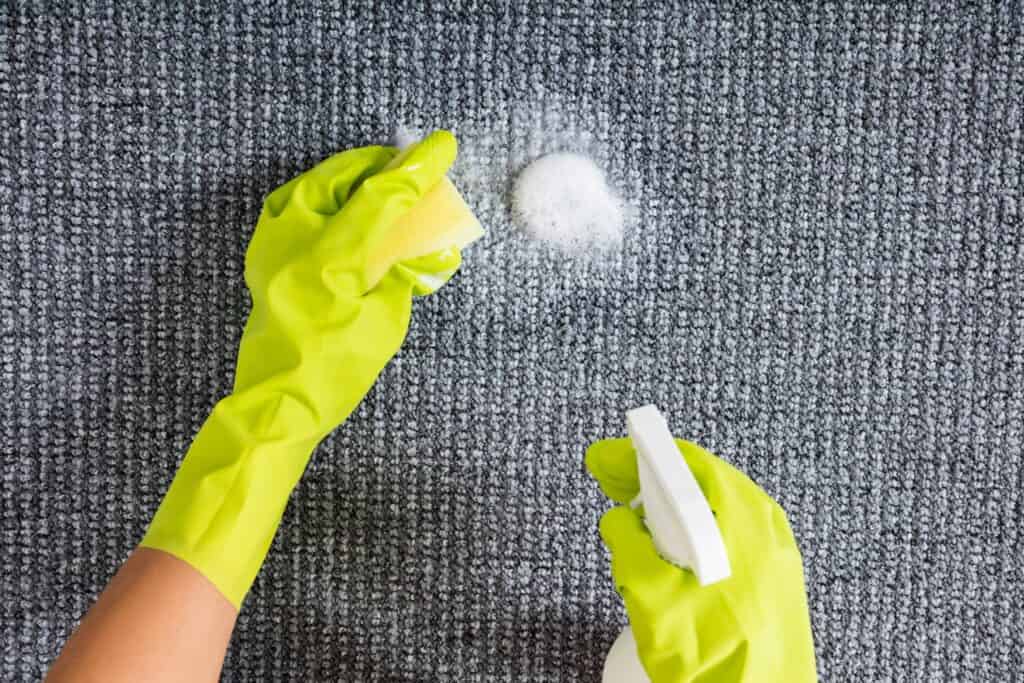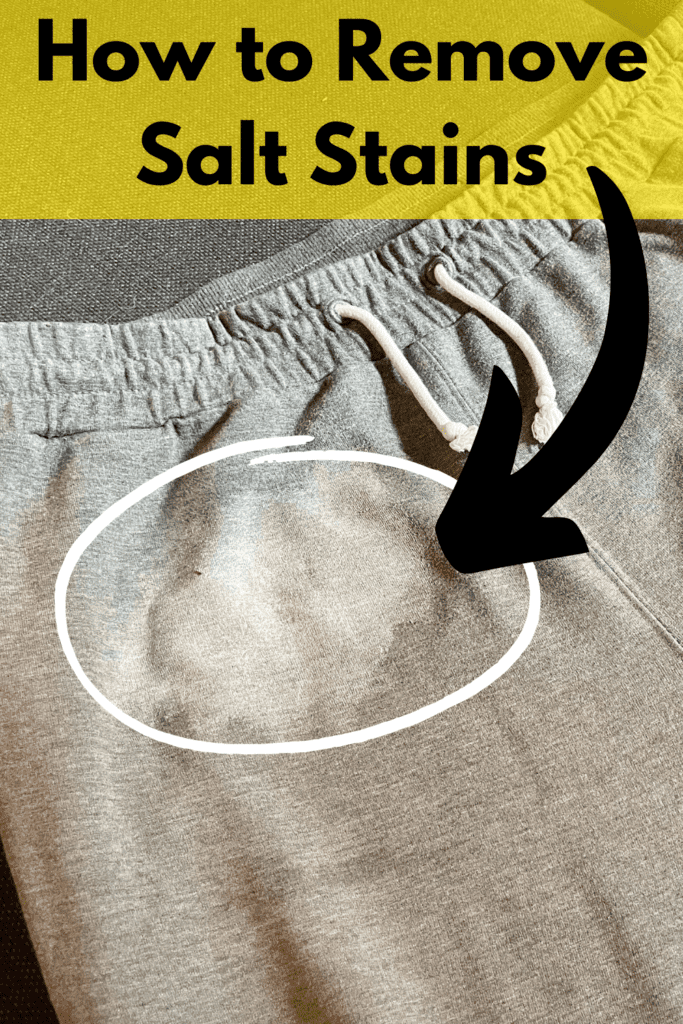Deicing salts are terrific for keeping our sidewalks from getting slippery during winter. But, sadly, these salts stick to shoes and clothes and find their way to our homes, into carpets and upholstery.
Salt forms corrosive stains that can easily wear out these items. Fortunately, we’ve got a few tips to help you to remove the pesky salt stains. Use these tricks to maintain your clothes, shoes, and carpets in good condition.
White vinegar is the most effective method of removing salt stains from clothes. Add one tablespoon of distilled white vinegar to one liter of water to make a cleaning solution. Use a piece of cloth soaked in this solution to blot the clothes’ stain.
Why Removing Salt Stains Is Important
Before we delve into removing salt stains, it is essential to understand why it is valuable to remove salt stains.
Salt stains are bound to happen, especially during the winter season. Without accepting this, you cannot have the motivation and the patience to clean the stains.
If left on clothes and leather for an extended period, salt can easily ruin them. This is due to its strong alkaline, corrosive nature, which makes it bleed dye from clothes. As for leather items, they make them dry and rough.
How to Remove Salt Stains From Clothes

The first step before starting to remove the salt stain is to understand the care instruction of the item you are dealing with. Some cleaning chemicals will not only work with certain fabrics but might even damage them.
Others are the dry clean only types of clothes whose cleaning can only be handled by dry cleaning professionals.
That is unless you’ve got the home use dry cleaning kit. Additionally, keep in mind that, like most stains, they are easily removable when fresh.
After noting the precautions, the next step is removing the stain’s salt residue. The point is to ease the cleaning process by reducing the salty soil. You can do this by brushing with an old toothbrush or a hair brush. Next, rinse the garment in cold water before soaking it in cool water for a minimum of two hours or longer.
Later, measure the normal dosage of a heavy-duty washing detergent, and run the garment under the warm water cycle setting. Then, rinse and inspect the garment to check if the salt stain has been removed before drying.
You can use a more powerful stain remover, such as white vinegar, for stubborn stains. White vinegar is one of the most potent salt stain removers.
To use vinegar, add one tablespoon of it into 1 liter of water in a basin to make a stain remover solution.
You can soak a white piece of cloth in this solution and blot the stain to remove the residues of the stain from the garment.
How to Remove Salt Stains From Dry-Clean Only Clothes
The best option for these kinds of clothes is to deliver them to professional cleaners. These are the people with the technical knowledge and the tools to do it. Before heading over there, take note of the stain spots so as to be able to show them.
That said, you can also clean them at home if you have the home dry cleaning kit. Before starting this procedure, be sure to read the care label on the items on how to go about it.
You can also read more about the instructions on how to clean them on the home dry cleaning kits.
But the general recommendation is to mist the stain spot with water and dab the moistened stain as much as possible. Afterward, you can use the stain removal solvent on the stain as directed.
How to Remove Salt Stains From Shoes
Salt stains are especially more damaging to shoes, particularly leather ones. Shoes are closer to the ground and are more prone to collecting stains than clothes.
While some types of shoes might require special attention, generally, the cleaning of salt stains on shoes is largely the same.
When cleaning salt stains from shoes, timing is essential. You need to act fast to prevent it from setting into the leather. The first thing is to brush off the shoes, to remove the loose salt from the salt stain.
Next, use white vinegar to remove the salt stains. The acetic acid in white vinegar makes it perfect as a salt stain removing agent. To use white vinegar, add one tablespoon of it to 1 liter of water and stir to make a solution.
Dip a piece of cloth into this solution, and squeeze it slightly to remove excess solution to avoid oversaturation. With this cloth, start gently wiping the shoes from the edges towards the center.
The point is to remove the stains that are around the sole, and then you move towards the upper section. This is because the part near the sole is more soiled. This way, you make the cleaning process easier.
When satisfied with the results, use a paper towel or a dry cloth to blot out the vinegar-water solution from the shoes. Change the cloth if need be as they get saturated with the cleaning solution.
Afterward, air-dry the shoes to avoid molding during storage. Keep in mind air drying is the best option for drying shoes.
And blow-drying or tumble-drying is never recommended. To sufficiently dry the shoes, ensure they are aired for more than 24 hours.
After they have completely dried up, apply leather conditioning. There are a number of good-quality creams you can buy from any convenience store or online.
Applying these creams will buff the leather, protect it from cracking, and drying, and restore its original form.
Removing Salt Stains From Sheepskin Boots
The process is almost similar to that of cleaning shoes. However, there are some exceptions you need to note. Prepare the cleaning solution of vinegar and water as usual.
But when it comes to cleaning, you need to be careful to avoid over-saturating the sheepskin. Doing so will lead to shrinking and possible permanent damage.
Additionally, you want to air dry them away from the direct sunlight glare to protect the delicate leather.
I also wrote a detailed guide on how to remove water stains from leather that may interest you.
Removing Salt Stains From Tennis Shoes
With tennis shoes, you do not need strong cleaning agents. Since most tennis shoes are made of mixed material types and leather, it would be safer to use milder cleaning solutions. For this, dish soap will suffice.
You can add one tablespoon of dish soap to one liter of water to make a stain remover. Then use a piece of cloth to wipe the shoes. Once the stain is removed, wipe them with a dry cloth and air-dry them in the open.
Removing Salt Stains From Suede Shoes
Salt stains easily damage suede shoes. Overstayed salt stains dry and eventually wear out the suede leather. And that is why you should act fast in removing the stains from it.
Prepare vinegar water solution in a bowl. Next, with a white lint-free cloth dipped in this solution, gently wipe the stain until it is removed.
Remember, when it comes to cleaning stains from suede, you want to avoid oversaturating the leather to prevent it from wearing out. Therefore, wring out the excess solution from the cloth before using it.
Removing Salt Stains From Suede Without Vinegar
You might want to avoid vinegar, depending on the suede item you are cleaning. While it is a great cleaning agent, it might damage some suede leather items.
Vinegar is too harsh to remove salt stains for some delicate leather purses, bags, or jackets. In addition, vinegar has been reported to change suede color to black. Other people do not like using vinegar because of its smell or its drying effect on the skin.
If you do not like suede for whatever reason, you can opt for commercial suede cleaner. Suede cleaners are easily obtainable from any convenience store or in online outlets.
Removing Salt Stains From Carpets
Removing salt debris and stains from carpets requires a lot of tact and patience. Due to their wooly bristles, the salt material can permeate deep into the carpet and make it difficult to remove them.
Here is how to do it effectively.
Vacuuming

First, vacuum the carpet thoroughly to remove the hidden salt debris from inside the carpet. Do this by gently moving the vacuuming nozzle on the carpet surface to suck all loose debris.
This step is critical because if you do not remove all the loose materials, you will make the cleaning process more difficult. Also, be keen on vacuuming to avoid sucking in liquid salt materials. If you realize the debris is wet, it is advisable to use other methods or use a wet vac. Sucking in liquids with ordinary vacuum cleaners will only damage them, as they weren’t designed for that purpose.
Apply Neutralizer

At this point, you want to dissolve the salt to make it easily removable. For this, you have the option of a commercial neutralizer or homemade solutions.
Commercial neutralizers are specially designed for stubborn salt stains. So, if the stains are not that bad, you do not have to buy expensive neutralizers.
You can opt for the homemade solution instead. One of the options is a vinegar-water solution. Vinegar is a strong acid, making it the right chemical to dissolve the strongly alkaline salt.
To make a salt stain remover from vinegar, mix 1:1 part vinegar and warm water, and mix thoroughly to make a solution. Using this solution in a spray bottle, apply it to the carpet, ensuring not to saturate it.
Saturating it will result in more problems when it comes to drying to avoid molding. After applying, let it sit for five minutes before dabbing to dry with a paper towel, or if available, you can use a wet vac.
Finally, you can air dry the carpet thoroughly before vacuuming with the regular vacuum cleaner to restore the fluffiness. Remember, properly drying the carpet before reusing it is essential.
Improperly dried carpet creates the breeding ground for mildew and other bacteria. The result is a musty-smelling carpet you do not want.
Other carpet salt stains remover
If, after trying the above method, the stain still remains, you can try other methods. For example, you can use a dishwashing water solution to remove the stain.
Add two tablespoons of dishwashing detergent to one liter of water to make a solution. Substitute vinegar with this solution and follow all the other steps in the other methods above.
Next, you can check out my list of all the best stain removers on the market.
Frequently Asked Questions
How Can I Prevent Salt Stains on Shoes?
It is not easy to completely prevent salt stains on leather shoes. However, you can reduce the effect of salt deposits on shoes by doing a few things.
One is to properly dry them to prevent wicking, which may attract new salt deposits. The other is to apply a little olive oil or coconut oil. This creates a protective layer to protect against salt deposits and drying out.
Can Salt Stain Wood Items?
Wood items are pretty vulnerable to salt stains. This is because salt deposits on wood start seeping through the wooden item over time. Furthermore, they eat away at any applied varnish making the item dull.
Therefore, any salt stains on wooden tiles, cupboards, or tables should be immediately wiped off to prevent them from ruining the item.
To remove any stubborn salt stain, spray the spot with a vinegar-water solution and wipe it out with a clean microfiber.
How Can I Remove Salt Stains From Stainless Steel?
Salt stains can corrode the stainless steel finish of any item over time. You can avoid this by cleaning the salt stains with vinegar immediately.
Add two teaspoons of white vinegar to 1 liter of water to make this solution. Next, use this solution to wipe the stainless steel surface.
Afterward, rinse the cloth with water, and use it to wipe the steel surface before drying with a dry cloth or microfiber.


I’m an expert wardrobe organizer and a bit of a clean freak. I created this website and its YouTube channel to share practical guides about laundry and organizing. My teachings have been featured in multiple large news publications, and I’ve self-published two wardrobe organizing books and an entire course on the subject.

